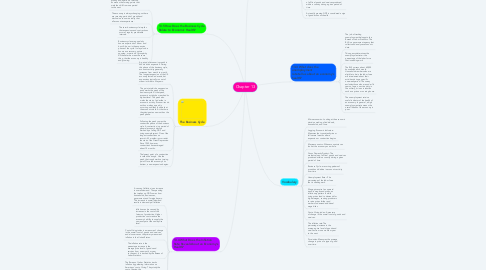Chapter 13
by Rachel Johnson

1. 13.4 What Does the Inflation Rate Reveal About an Economy’s Health?
1.1. A cause of inflation is an increase in overall demand. The spending that makes up GDP comes from households, businesses, government, and foreign buyers. This increase in overall demand results in demand-pull inflation.
1.2. Inflation can be caused by increases in the cost of the factors of production. Higher production costs reduce the economy's ability to supply the same output at the same price level.
1.3. Cost-of-living index is a measure of change in the overall cost of goods and services and also serves as the primary measure of inflation in the United States.
1.4. The inflation rate is the percentage increase in the average price level of goods and services from one month or year to the next. It is tracked by the Bureau of Labor Statistics.
1.5. The Bureau of Labor Statistics tracks inflation by gathering information on Americans' cost of living. They study the cost of buying the goods and services that households purchase every day. The cost of living changes all the time because prices do not stay the same.
1.6. Economists track changes in the cost of living using price index. A price index measures the average change in price of a type of good over time.
2. 13.5 How Does the Business Cycle Relate to Economic Health?
2.1. The business cycle has four phases. These phases include a period of growth and a period of decline, as well as the turning points that mark the shift from one period to the next.
2.2. The economy is always changing so there are recurring periods of growth and decline in economic activity that all economies experience.
2.3. The term business cycle implies that expansions and contractions occur at regular, predictable intervals.
2.4. Business cycles are popularly known as periods of boom and bust. A boom is the expansion phase of the cycle. It may also be known as a recovery, upturn, upswing, or period of prosperity. All these terms mean the same thing, that the economy is healthy and growing.
3. The Business Cycle
3.1. A period of economic growth is known as an expansion. During this phase of the business cycle, economic activity generally increases from month to month. The longest expansion of the U.S. economy lasted a decade, but expansions typically run out of steam in three to five years.
3.2. The point at which an expansion ends marks the peak of the business cycle. At that peak, economic activity has reached its highest level. The peak also marks the start of a decline in economic activity. Economists do not know when a peak is occurring until they look back at the economic data. At that time they designate one month as the peak phase.
3.3. Following the peak comes the contraction phase of the business cycle. A contraction is a period of general economic decline marked by a falling GDP and rising unemployment. One of the longest contractions on record—43 months—occurred at the start of the Great Depression. Since 1945, however, contractions have averaged about 10 months.
3.4. The lowest point of a contraction is called the trough. Like the peak, the trough marks a turning point. Once the economy hits bottom, a new expansion begins.
4. 13.2 How do economists measure the size of an economy?
4.1. They can look at the economic decision making of individuals, households, and firms. This is called microeconomics. Or economists can look at the economy as a whole, also known as macroeconomics.
4.2. The main measure of the size of a nation's economy is its gross domestic product. GDP is an economic indicator that measures a country's total economic output.
4.3. Gross Domestic Product is the market value of all final goods and services produced within a country during a given period of time.
4.4. A steadily growing GDP is considered a sign of good economic health.
5. 13.3 What does the unemployment rate tell us about an economy's health?
5.1. The job of tracking unemployment belongs to the Bureau of Labor Statistics. The BLS is a government agency that collects and analyzes economic data.
5.2. This agency determines the unemployment rate—the percentage of the labor force that is seeking work.
5.3. The BLS surveys about 60,000 households each month. Household members who are eligible to be in the labor force are interviewed about their activities during a specific one-week period. The survey excludes those who are under 16 years of age, on active duty in the military, or in an institution such as a prison or nursing home.
5.4. The unemployment rate is a useful indicator of the health of an economy. In general, a high unemployment rate means the overall health of the economy is poor.
6. Vocabulary
6.1. Microeconomics- Looking at the economic decision making of individuals, households, and firms.
6.2. Lagging Economic Indicators- Measures that consistently rise or fall several months after a expansion or contraction begins
6.3. Macroeconomics- When economists can look at the economy as a whole.
6.4. Gross Domestic Product- The market value of all final goods and services produced within a country during a given period of time.
6.5. Business Cycle- a recurring pattern of growth and decline in economic activity over time
6.6. Unemployment Rate—The percentage of the labor force that is seeking work.
6.7. Wage-price spiral- an upward trend in wages and prices; an inflationary pattern in which rising prices lead to demands for higher wages, causing producers to raise prices further and workers to demand additional wage hikes
6.8. Cost-of-living index- A measure of change in the overall cost of goods and services.
6.9. The inflation rate-The percentage increase in the average price level of goods and services from one month or year to the next.
6.10. Price index- Measures the average change in price of a type of good over time.


